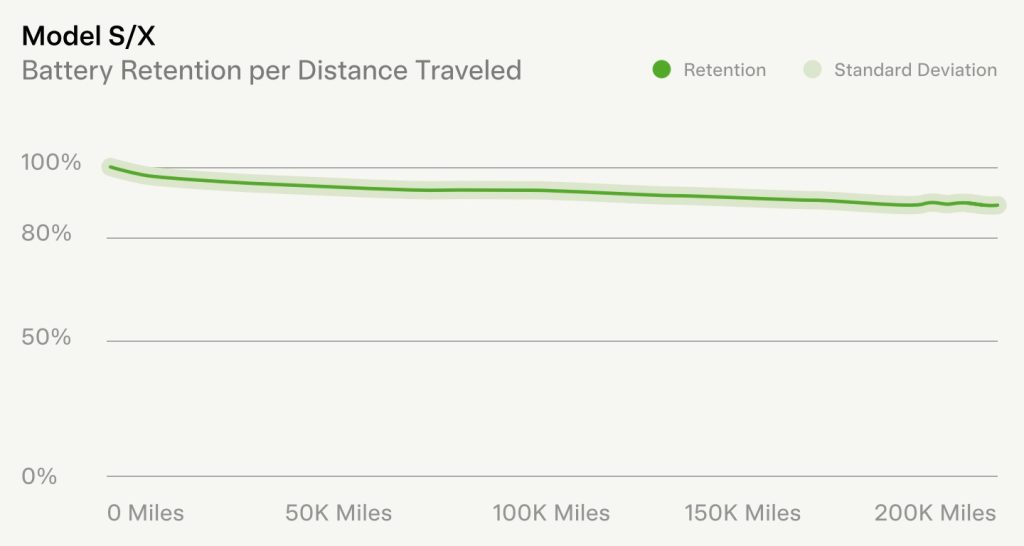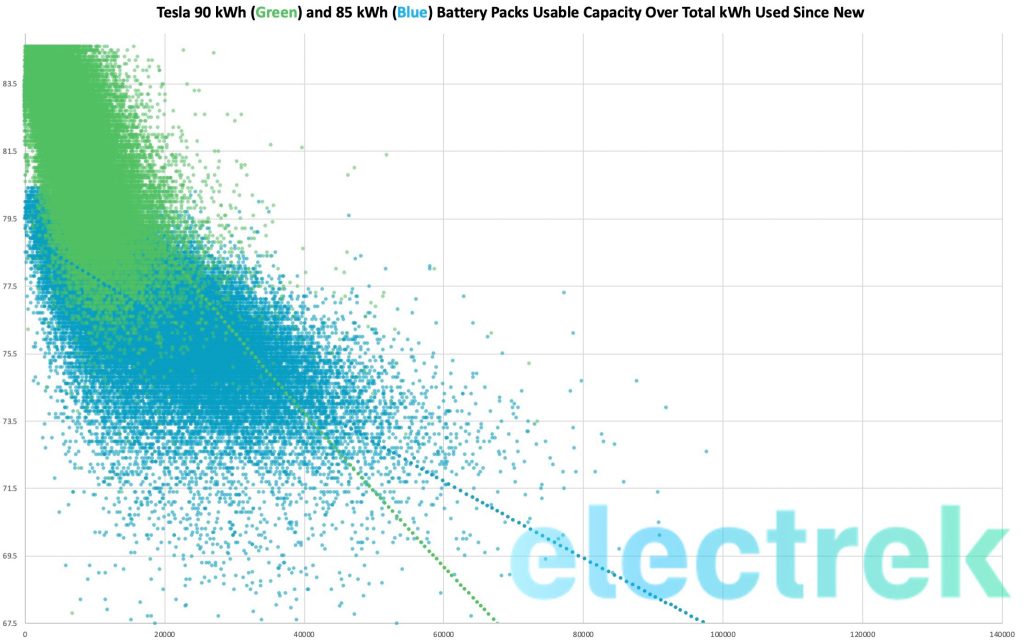
Tesla has released a rare update on the battery degradation in its electric cars. The automaker claims its batteries only lose about 12% of capacity after 200,000 miles.
Battery degradation, which represents the loss in capacity and range over time with increasing mileage, is one of the biggest concerns of new electric vehicle buyers.
It’s also an essential part of the equation to make electric cars more sustainable.
The longer a battery pack can be in operation, the longer it will keep itself from being scrapped for recycling, and the longer it can keep the whole car in operation.
Tesla has rarely released data on that front, but it has done so as part of its annual “Impact Report” since it is pertinent to calculating the environmental impact of its electric vehicles.
Today, Tesla released its 2022 Impact Report, and the automaker updated its battery degradation data – now reporting 12% battery degradation after 200,000 miles:

The results are similar, although slightly worse than in its previous Impact Report.
Tesla is also only referring to Model S and Model X battery degradation – presumably because it has more long-term data on those vehicles.
Interestingly, the automaker says that it will start disclosing other datasets for new battery chemistries used in more recent vehicles:
Mileage is only one factor in battery capacity retention; battery age is also a major factor. Retention figures at lower mileages above likely reflect the impact of age while higher mileage values, which come from high-utilization vehicles, likely reflect less influence from battery age. Performance of newer chemistries (not shown here) can vary and we plan to expand disclosure once we have sufficient data.
As we previously reported, the degradation can change significantly depending on the vehicle model and battery pack.
Electrek previously obtained detailed data from thousands of Tesla vehicles showing that Tesla’s 90 kWh pack would lose battery capacity much faster than the 85 kWh pack:

Early data from newer Model 3 and Model Y vehicles also show strong capacity retention of less than 10% after 100,000 miles and less than 15% after 200,000 miles, but not many vehicles have reached those mileages just yet.
Either way, the data shows that the average battery capacity retention stays well within Tesla’s guaranteed capacity in its vehicle warranty.
Author: Fred Lambert
Source: Electrek




Top comment by David Muse
Liked by 11 people
The most important factor, in my opinion, isn’t even mentioned – pack size. A smaller battery will be cycled many more times than a large battery over the vehicle lifetime.
Imagine a battery rated for 1000 cycles (a cycle is one complete usage of the battery’s capacity.)
A 100-mile range EV would use up 1000 cycles in 100,000 miles.
A 300-mile range EV should get 300,000 miles. (300 times 1000 cycles.) Huge difference, controlled by pack size.
View all comments